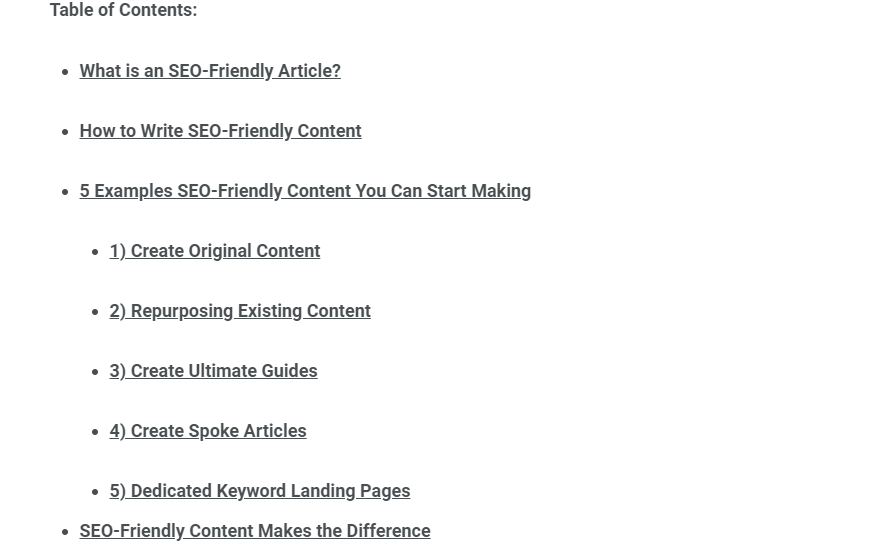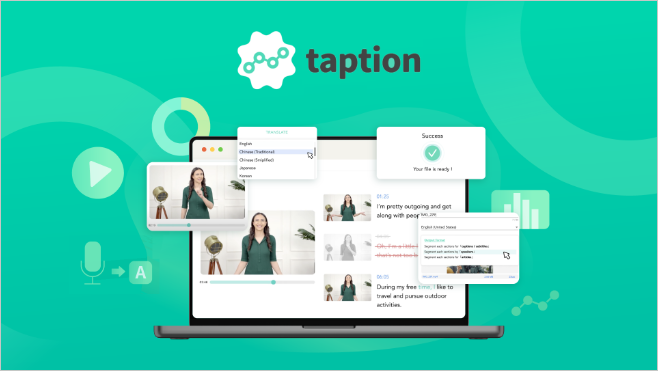Every digital publisher should be looking to create at least some content that drives website traffic for years with minimal upkeep.
Content creators know the challenges of creating content that attracts clicks, which makes evergreen content that continues to rank in the search engine results pages (SERPs) long after it’s published ever more valuable.
Ahrefs found that of the more than 2 million new web pages it studied, only 5.7% ranked in Google’s top 10 within a year. In other words, focusing on evergreen content is a crucial long-term content strategy for driving traffic, building an audience for less money and establishing topical authority.
Now, it’s all very well to say create high-value and optimized evergreen content, but the process can be challenging. Join us as we look at seven tips that can help any publisher create their own evergreen content and then leverage it to build a sustainable revenue stream while trimming time and resource commitments.
What Is Evergreen Content?
Evergreen content can be summed up as any published media — articles, videos, podcasts, etc — that can drive traffic without regular updates. An evergreen article is optimized for search engines and remains valuable and relevant to readers for months or even years. This value keeps it at the top of Google and other SERPS as it is recognized as being the most trustworthy and informative piece of content on a specific topic.
Evergreen pieces are not tied to current events or trends and stay relevant by providing a pillar of content that is readily sought after by readers.
Investing in evergreen content is an effective tool in content marketing strategy. Not only can it attract visitors to a website long after its initial publication, but it’s also a way to generate passive income.
Examples of Evergreen Content
There are a lot of different types of evergreen content out there. Some of the most popular examples include are:
1. Listicles
Building large lists of content that cover every possible idea, service, or product in a particular subject matter is the idea behind listicles or list articles. These lists are a great form of evergreen content because they are typically filled with short and easily consumable content and lots of visuals.
For example, an ultimate list of design careers could be considered evergreen content. An ultimate list is a relevant long post regarding design career options. This form of content is easy to read thanks to short paragraphs and pictures.

List-type evergreen blog posts can attract a lot of attention to a site, because they are easy to link to and share. Publishers can easily incorporate display ads or sponsored content to generate long-term income. Consider a list-based post to start an evergreen topic cluster.
2. Product Reviews
Creating a thorough and honest review of a popular product or service that is regularly in demand can stay in Google’s top 10 for months and perhaps even years. While taking the top spot is a hard task, just appearing somewhere in the top 10 should be enough to attract a reasonable amount of traffic depending on interest in the topic.
People are looking for relevant content and doing their own research before purchasing a product. Often they want content to verify their purchase and, as long as the review stays in the top 10, people will see the post every time they look to learn more about a potential product purchase.
For example, State Of Digital Publishing recently completed a review of the Humix Network. This review and case study provides real life results of using Humix and can serve as a point of reference for anyone interested in the product.

Product reviews can use affiliate links and sometimes sponsored content. In-demand product reviews might include popular web hosting services or popular online courses.
3. Ultimate Guides
These thorough, in-depth tutorials typically focus on a single topic. Ultimate guides are generally longer than a common blog post and provide readers with all the information needed on a single topic.
These guides can live in the SERP top 10 and may attract backlinks from other sites looking for authoritative sources for their readers. This helps strengthen a site’s backlink profile and topical authority.
Promoting affiliate products and including sponsored content in ultimate guides is a great monetization strategy. People reading ultimate guides may be doing so with buying intent as they look to start a project.
Looking at this ultimate guide on making a website, the author inserts affiliate links throughout the article each time they introduce a necessary tool.

4. How-To Guides
Different from an ultimate guide, how-to guides focus instead on teaching micro details of a process in a step-by-step format. Creating an informative how-to guide on common or up-and-coming topics can attract new visitors to a site for years to come.
This guide on “How to Become A Web Publisher” might attract new digital publishers by carefully explaining the beginner steps needed. There is an opportunity to promote products in affiliate links with this type of content.
Many of these content types lend themselves well to building passive income machines. By promoting products through reviews, guides, how-tos, and large subject lists, a site now has a hub to promote products through relevant content for years to come. This will lead to more ad revenue, affiliate marketing leads, and higher interest in building subscribers.
Monetization Strategies for Evergreen Content
Having briefly touched on possible monetization options above, it’s important now to take a deeper look into some of the most popular and effective revenue models for evergreen posts.
Ad Revenue (Display Ads)
There are many types of ads a site can run. Display ads are particularly effective for pages that receive a lot of traffic. Networks, such as Google AdSense or Amazon Native Shopping Ads, can be used to generate revenue. These might vary in ad format from image based ads, text-based ads, and video ads.
Display ads can be paid on a pay-per-impression (PPM) or pay-per-click (PPC) basis. PPM ads pay for the number of times the ad is viewed, the more page views, the more payout. PPC based ads may pay higher per interaction, but require the visitor to click on the actual ad to generate revenue.
Affiliate Marketing
Affiliate programs allow partner sites to promote select products via affiliate links, which track a visitor’s origin and allow the advertiser to commissions based on sales generated via said links.
Affiliate links can be seamlessly inserted into product reviews or other evergreen content types that contain buying intent.
Wirecutter is a great example of this strategy. Looking at its review on dishwashers shows the publisher has delved into benefits of the best dishwashers, along with some potential purchasing concerns. This balanced approach to reviews helps build trust with the audience, with affiliate links accompanying each item helps the audience progress further along the customer journey.
Walk-throughs, with How to Publish an eBook being a good example, can also encourage visitors to click on affiliate links. The eBook publishing post has affiliate links inserted at strategic points where readers need to sign up or purchase something to continue to the next step.
Sponsored Content
Sponsored content is a more direct revenue stream than others and involves publishers creating blog posts or articles about a specific company’s products or services. These posts might be reviews, beginner’s guides or other topical articles.
Here’s an example of a sponsored cooking blog article, which not only provides a recipe but also promotes ingredients from Star Fine Foods.

Promoting Digital Products
The upside to creating digital products is there is no barrier to scaling sales, there’s little to no shipping, handling, storage or inventory. Once a product is up and running, the sales infrastructure will require minimal maintenance.
For example, a woodworker publisher can create content that focuses on how-to guides with woodworking plans for digital download positioned at the end.
Offering Consulting or Coaching
We’ve already spoken about how evergreen writing can establish a site as an authority on a specific topic. After all, people scouring the search results for knowledge want to learn from authority figures in their field. Offering services in the form of one-on-one or small-group coaching can be a solid way to leverage evergreen content.
This guide on coaching establishes the site as an authority, provides useful information to the reader and promotes its services in the article.
Instead of active coaching, building a course allows others to learn at their own pace. This also means publishers can scale their reach without exceeding their resources with one-on-one tuition for every student.
Courses can take the form of textbase literature or short-form video content. State of Digital Publishing (SODP), for example, has created a Publisher SEO course that offers lessons on tried and true SEO strategies via a mix of text and video material.

How to Identify Evergreen Topics
Finding evergreen topics that aren’t already well-established can be done using a few simple processes.
Use keyword research tools to identify specific keywords that have a low ranking difficulty and an upward-trending search volume. Tools such as Ahrefs can be extremely valuable when looking for keywords. At the same time, using tools like Google Trends allows publishers not only to identify popular trends but also where in its lifecycle that trend exists.
Spend time on forums or social media groups to learn about frequently asked questions and problems people face on a daily basis. Knowing what target audiences are dealing with will streamline the topic generation phase.
7 Tips for Creating Evergreen Content
Tip 1: Focus on Evergreen Formats
We’d advise focusing on the aforementioned evergreen content example types to start with, simply because they work. They’re proven to produce long-term value and remain relevant over the longer term..
For example, an article about generating passive income is an evergreen format because of how it provides a lot of value to the reader. Not only is there a list of 10 passive income ideas, along with thorough explanations of each topic, but each section also includes helpful links and provides supporting facts where necessary.
This article can be easily linked to and shared. The topics also are well established forms of passive income and will be relevant for years to come.
With a few high-performing evergreen articles, publishers can experiment with alternative types. Additional ideas might include:
- Case studies
- Interactive quizzes
- Expert roundups and interviews
- Resource libraries
Tip 2: Go In-depth
Building an in-depth resource is a great way to stay relevant. For example, this article on how to read construction plans guides readers through every aspect of construction plans, from terminology to large and fine detail elements. It also covers where to start and how all a plan’s sections tie together.
An in-depth article can cover very broad topics and still provide enough information that advanced users will still find the article useful. These pieces not only prove topical authority to readers, but also prove to prospective clients that the creator is a thought leader in the field.
When writing evergreen content, focus on timeless topics and invest the time and research to create long-form content. Include step-by-step directions, thorough examples, in-depth explanations and statistics to provide a reader with a holistic understanding of the topic.
Tip 3: Use SEO Best Practices
Search engine optimization (SEO) is the process of organizing and structuring content to improve its discoverability and ranking by search engines. Using proven SEO techniques means evergreen content will rank higher and be seen by more people online.
A few SEO techniques include keyword research, internal linking and building a high-quality backlink profile.
In this article about SEO friendly content, target keyword “SEO-Friendly” appears throughout the article along with longer terms such as SEO-friendly content and SEO-friendly articles. The target keyword is also in the title and appears in headers throughout the article.

Also notice how this article uses strategic internal linking to relevant articles across the site.
Tip 4: Hack Trends, Avoid Fads
Tracking trends is a great way to gain traction quickly, but without a solid approach to the content creation the article won’t hold up over the long term. For instance, instead of writing about a trending diet fad, focus instead on wellness tips or healthy lifestyle content.
This article about taking meeting notes avoids new note taking products or styles and focuses on teaching commonly accepted ways to take, use and distribute meeting notes. This article also covers a lot of breath on the subject and addresses all aspects of a meeting from beginning to end.
Tip 5: Use Multimedia
Multimedia is a great way to create engaging content. Not only does Google appreciate multiple forms of media in articles, but visitors will too. Just remember to limit the number of stock images and content within the articles as this content is likely to appear elsewhere and drag down article originality.
Content from our partners
Everyone consumes media in various ways and providing a variety of media helps to promote engagement and even sharing across social media channels.
This article on embedding videos into WordPress articles ranks well in the SERPs thanks in part to its large amount of multimedia content. This article used text, images and video to guide readers through the process of embedding videos into their WordPress Articles.

Various types of media include text, gifs, infographics, pictures, videos, audio clips and links to podcasts.
Tip 6: Remember to Update
In an effort to build trust with readers, content does need to be kept up to date. Different content will require different levels of revising and editing to keep it fresh and competitive in the SERPs.
Monitor content after the publication date and consider a refresh if it’s struggling in the search rankings. Just don’t ask Google for too many recrawls, as the search engine has a budget for each site and asking for recrawls will not speed up the process.
It’s important that as list-based articles are updated, they continue to build authority and gain traction in the SERP.
Another reason to update evergreen content is to keep readers coming back for more. Use this as a form of lead nurturing and offering value to readers before they are ready to click that affiliate link or sign up for a digital product.
Tip 7: Think of The Audience

A dissertation, while valuable, isn’t necessarily the best choice for evergreen content. Avoid overly technical language to improve the user experience and help curate better engagement from readers. Also format the article so it’s easy to skim, breaking up the text with a lot of images and different forms of text.
Notice how easy this article on business blogging is to read. The paragraphs are short, only a couple sentences long, and notice also how it avoids long blocks of text by breaking up the page with images and large bold headlines.
If content is easy to read and digest, and free of grammatical errors, there is a greater chance it will be linked and shared. People might also be more inclined to click on affiliate or sponsored links, and it will ultimately lead to better brand recognition.

As we already discussed, creating long-form content can take time, but there are a variety of things to do to get the most out of it.
Promote content across social media, email newsletters and even paid ads. Getting eyes on the content and building links to it will be especially important when starting out. Be sure to incorporate evergreen content into social media marketing strategy.
Also, consider repurposing an evergreen post into a lead magnet. An ultimate guide can be a free ebook or an in-depth product review might be a great white paper that can be exchanged with clients for their email addresses.
Finally, use evergreen posts to create different types of media. Consider turning long-form content into a podcast or a YouTube video to promote a site across multiple platforms.
Final Thoughts
Having discussed the importance of evergreen content, how it can benefit content strategy and included some great tips on how to get there, it’s important to note that seeing success requires a commitment to consistently following the steps we outlined.
By focusing on these tips, publishers can grow their audience, appear higher in SERPs and build topical authority, all while creating less content.
It’s safe to say that creating evergreen content should be part of everyone’s content marketing strategy. For those interested in creating a comprehensive content strategy for their site, SODP’s content strategy experts can tailor a comprehensive content plan perfect for any publisher’s specific goals and needs.













